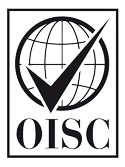 07 November 2016
07 November 2016
This week has seen the announcement of changes to both the Immigration Rules and the EEA Regulations.
Immigration Rules
The most important changes are:
- The removal of the 28 day ‘grace period’ – at the moment, an application that is submitted up to 28 days after a person’s leave expires isn’t rejected solely because it is late, but from 24 November 2016 this grace period will be removed. After that date any out of time application will be rejected on that basis alone, unless it is submitted within 14 days of the person’s leave expiring, and is for ‘reasons outside their control’.
- This has been on the cards for a long time – a second English test, at a slightly higher level (A2 CEFR), will be required for anyone applying for an extension of their leave as a partner or parent of a settled person if their current leave expires on or after 01 May 2017.
- The minimum salary requirement under Tier 2 is to increase.
EEA Regulations
EEA law in the UK is set out in the Immigration (EEA) Regulations, which have been in force since 2006, and which have been changed a number of times. These will be replaced, on 01 February 2017, by new regulations – the Immigration (EEA) Regulations 2016.
While the new regulations are, for the most part, very similar to the old regulations, and merely consolidate them, there are some important changes:
- EEA applications must be made in a ‘prescribed manner’ – presumably this means that the application forms will now be mandatory
- The ‘Surinder Singh’ route for the families of British citizens will be more difficult, as the Home Office can refuse applications if the main purpose of the move overseas was to circumvent UK immigration law
- Only blood relatives of an EEA national will be able to apply as an ‘extended family member’ – until now, it has been the blood relatives of an EEA national or of his or her spouse










